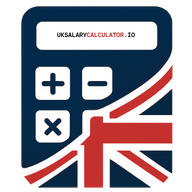What is the UK Personal Allowance? A Guide for 2025/26
The Personal Allowance is one of the most important figures in the UK tax system—it's the amount of money you're allowed to earn each year before you start paying any Income Tax. Understanding how it works is key to figuring out your real take-home pay.
Income Tax Rates and Bands (UK, excl. Scotland)
For tax year 2025/2026
| Band | Taxable Income | Tax Rate |
|---|---|---|
| Personal Allowance | Up to £12,570 | 0% |
| Basic Rate | £12,571 to £50,270 | 20% |
| Higher Rate | £50,271 to £125,140 | 40% |
| Additional Rate | Over £125,140 | 45% |
What is the Personal Allowance for 2025/2026?
For the tax year running from 6th April 2025 to 5th April 2026, the standard Personal Allowance is £12,570.
This means that if your total income for the year is £12,570 or less, you typically pay no income tax. If you earn more, you only pay tax on the amount that exceeds this threshold. For example, if you earn £30,000, you only pay tax on £17,430 (£30,000 - £12,570).
Example:
- Your Salary: £40,000
- Personal Allowance: - £12,570
- Taxable Income: = £27,430
In this case, you would only pay tax on £27,430, not the full £40,000.
The Personal Allowance Taper for High Earners
The Personal Allowance is not the same for everyone. If your 'adjusted net income' (which is your total income less certain reliefs like pension contributions) goes over £100,000, your Personal Allowance starts to shrink.
The rule is: your allowance is reduced by £1 for every £2 you earn over £100,000.
This means that if your income reaches £125,140, your Personal Allowance is completely wiped out, and you pay tax on your entire income. This creates a surprisingly high effective tax rate of 60% on income between £100,000 and £125,140, because you're losing your tax-free allowance at the same time as paying 40% tax.
How Does This Affect My Tax Code?
Your tax code tells your employer how much tax to deduct from your pay. The most common tax code in the UK for the 2025/26 tax year is 1257L.
The number in the code (1257) represents your Personal Allowance (£12,570) divided by 10. The letter 'L' signifies that you're entitled to the standard tax-free Personal Allowance. If your tax code is different, it means you may have other allowances or deductions that affect how much tax you pay. Our main salary calculator lets you input your specific tax code for an accurate calculation.
Conclusion
The Personal Allowance is a fundamental part of the UK tax system that benefits millions of people. While it's a standard amount for most, it's crucial for high earners to be aware of the taper, as it can significantly impact their final take-home pay. By understanding how your allowance works, you can better plan your finances and make informed decisions.

